Hey there – let’s cut right to the chase. If you’re wondering why some people develop colorectal cancer while others never hear the word “polyps,” the answer lives in a mix of age, genes, habits, and even a few hidden health conditions. Knowing the colorectal cancer risk factors isn’t just trivia; it’s the first step toward taking control of your health, getting the right CDC‑backed guidance, and possibly catching a problem before it becomes serious.
Below you’ll find a friendly, down‑to‑earth walk‑through of everything that raises or lowers your odds. Think of it as a conversation over coffee, with a dash of science and a sprinkle of personal stories to keep it real.
Understanding Risk Basics
First, let’s define what a “risk factor” actually means. In plain language, it’s anything that makes it more likely you’ll develop a disease. Some factors you can change – like what you eat or how much you move – while others are fixed, like the day you were born.
Scientists measure risk using numbers called relative risk or odds ratios. A relative risk of 2.0, for example, means you’re twice as likely to get colorectal cancer compared with someone who doesn’t have that factor. Those numbers sound clinical, but they translate into everyday decisions: “Should I add an extra veggie serving?” or “Is it time for a colonoscopy?”
| Risk Factor | Relative Risk (≈) | Modifiable? |
|---|---|---|
| Age ≥ 45 | 3–4× | No |
| Family history (first‑degree) | 2–3× | No |
| Processed meat ≥5 servings/week | 1.3–1.5× | Yes |
| Regular exercise (≥150 min/week) | 0.8× (protective) | Yes |
| Obesity (BMI ≥ 30) | 1.4× | Yes |
Non‑Modifiable Factors
These are the things you can’t rewrite, but you can still act around them.
Age & Demographics
Age is the biggest driver. The risk climbs sharply after you turn 45, and most diagnoses happen after 50. Recent data even show a slow rise in “early‑onset” cases – people under 50 getting colorectal cancer – though it remains relatively rare.
Family History & Genetics
If a parent, sibling, or child had colorectal cancer or polyps, your odds jump. Even more potent are hereditary syndromes:
- Lynch syndrome (HNPCC) – a DNA‑repair glitch that can also affect the uterus, stomach, and more.
- Familial adenomatous polyposis (FAP) – dozens to hundreds of polyps appearing in the teen years.
Both conditions are rare but worth mentioning because they prompt earlier and more frequent genetic counseling and screening.
Ethnicity & Race
Statistics consistently show higher incidence among African‑American and Ashkenazi‑Jewish populations. The reasons are multifactorial – genetics, diet trends, and historical access to care all play a role.
Modifiable Lifestyle Factors
Here’s where you can truly make a difference. Think of each habit as a lever you can pull to tilt the odds in your favor.
Diet & Nutrition
What lands on your plate matters more than you might think. A diet low in fiber and high in red or processed meats is consistently linked to higher diet cancer risk. The culprits? Heme iron, nitrites, and high‑temperature cooking chemicals that can damage colon cells.
Swap the bacon‑heavy breakfast for oatmeal topped with berries, or trade a steak dinner for a hearty bean‑based chili. Adding plenty of fruits, vegetables, and whole grains not only gives you fiber (which speeds waste through the colon) but also packs antioxidants that protect DNA.
Physical Activity
Never underestimate the power of a daily walk. Studies show that meeting the guideline of at least 150 minutes of moderate‑intensity exercise per week can shave off roughly 20% of your risk. The mechanism? Exercise improves insulin sensitivity, reduces inflammation, and helps maintain a healthy weight.
Body Weight & Obesity
Carrying extra pounds, especially around the waist, fuels inflammation and raises insulin levels – both of which can nudge colon cells toward malignancy. Even a modest weight loss of 5–10% can make a noticeable difference.
Alcohol Consumption
Alcohol may be a “social” habit, but regular intake—more than one drink per day for women or two for men—has been shown to increase risk. If you enjoy a glass of wine, keep it moderate; if you don’t, that’s a win for your colon.
Tobacco Use
Smoking isn’t just a lung problem. Long‑term tobacco use doubles the chance of developing colorectal cancer and also raises the likelihood of precancerous polyps. Quitting is tough, but every smoke‑free day reduces risk and improves overall health.
Medical Health Factors
Some conditions sit behind the scenes, nudging risk upward.
Inflammatory Bowel Disease (IBD)
Both ulcerative colitis and Crohn’s disease create chronic inflammation, which can turn normal colon lining into cancer over time. If you have IBD, regular colonoscopies are essential, often starting a decade earlier than usual.
Type 2 Diabetes
Even after accounting for weight, diabetes independently raises colorectal cancer risk. Elevated insulin and related growth factors can stimulate abnormal cell growth. Managing blood sugar through diet, exercise, and medication is a double win—for diabetes and for your colon.
Prior Polyps or Cancer
Finding a polyp isn’t a death sentence, but it signals that your colon cells are prone to changes. Follow‑up surveillance colonoscopies help catch anything before it turns malignant.
Turn Knowledge Into Action
Understanding risk is only half the battle. Let’s translate that knowledge into concrete steps you can take today.
Screening – Your Best Defense
Screening is the single most effective way to prevent colorectal cancer. The current recommendation is to begin at age 45 for average risk, but if any of the non‑modifiable factors apply (family history, IBD, genetics), start earlier.
Screening options include:
- Colonoscopy – the gold standard; looks at the entire colon and allows polyp removal.
- FIT (Fecal Immunochemical Test) – a stool test that detects hidden blood.
- Stool DNA tests – look for genetic changes shed by tumors.
Talk with your doctor about which test fits your schedule, insurance, and personal risk profile.
Lifestyle Tweaks With Biggest Impact
If you’re feeling overwhelmed, start with the three easiest changes:
- Cut the processed meat. Replace a weekly hot dog with a bean salad.
- Move a bit more. A 30‑minute brisk walk after dinner is a great habit.
- Quit smoking. Even cutting down to zero can dramatically lower risk within a year.
Small shifts add up, and you’ll likely notice added energy and better mood along the way.
When to Seek Genetic Counseling
If you have two first‑degree relatives with colorectal cancer, a diagnosis before age 50, or known Lynch syndrome in the family, consider a genetic counselor. They can recommend testing, tailor screening intervals, and even discuss preventive measures like low‑dose aspirin under supervision.
Ask Your Doctor – A Quick Checklist
- When should I start screening based on my family history?
- Which screening method is best for me?
- Do I need a referral for genetic testing?
- How often should I repeat colonoscopy if polyps were found?
- What lifestyle changes would most reduce my personal risk?
Having these questions ready turns a routine appointment into a proactive health plan.
Real‑World Stories
Case Study #1 – Diet Turnaround
Meet Maya, 52, who was told she had a few small adenomatous polyps during a routine colonoscopy. The doctor explained that her love for daily bacon‑and‑egg sandwiches likely contributed. Maya swapped breakfast for a Greek‑yogurt parfait with nuts and started a Sunday “vegetable night.” Six months later, a repeat colonoscopy showed no new polyps, and her doctor noted the improvement in colon health. Maya’s story underscores how a simple dietary shift can make a measurable difference.
Case Study #2 – Lynch Syndrome Journey
Tom, 38, discovered at age 30 that his mother had died from colorectal cancer. Genetic testing revealed Lynch syndrome. He began colonoscopies at 25 and now has a colonoscopy every two years. Early detection found a tiny sessile polyp, removed before it could grow. Tom credits genetics for the early alerts but emphasizes that staying active, limiting alcohol, and not smoking keep his risk as low as possible.
Expert Insights & Credible Sources
Dr. Elena Ramirez, gastroenterologist with 15 years of clinical experience, says, “The beauty of colorectal cancer prevention is that we have clear, evidence‑based actions. Age and genetics set the stage, but lifestyle and timely screening are the main actors that can change the script.”
All the data in this article come from reputable sources such as the CDC, the American Cancer Society, MedlinePlus, and peer‑reviewed studies up to 2025. When you see a claim, you can trace it back to these trusted institutions.
Conclusion
Understanding the three pillars of colorectal cancer risk—who you are (age, genetics, ethnicity), what you do (diet, activity, smoking, alcohol), and what your body tells you (IBD, diabetes, prior polyps)—gives you a powerful roadmap. Armed with that knowledge, you can schedule the right colorectal cancer screening, adopt lifestyle habits that truly protect you, and, if needed, seek genetic counseling to stay ahead of the curve.
Take a moment today: check if you’re due for a screening, swap one processed‑meat meal for a plant‑based alternative, or simply schedule a chat with your doctor about your family history. Small, intentional steps add up, and you deserve a future where you feel confident about your colon health.
We’d love to hear from you! What changes are you thinking about making? Have you already taken steps that helped lower your risk? Drop a comment below or share your story with a friend who might benefit. Together, we can turn awareness into action and make colorectal cancer less scary for everyone.

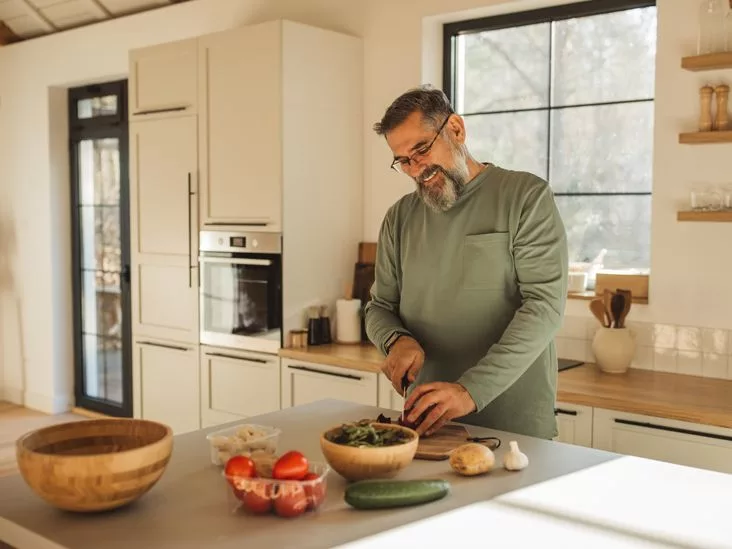


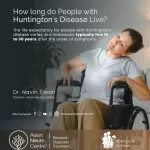


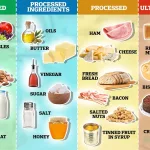


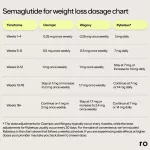

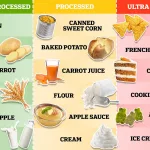
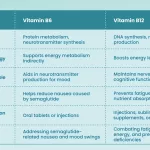

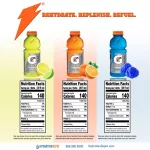
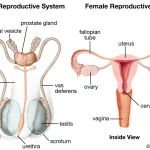

Leave a Reply
You must be logged in to post a comment.